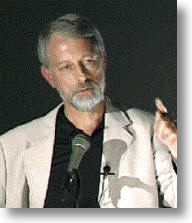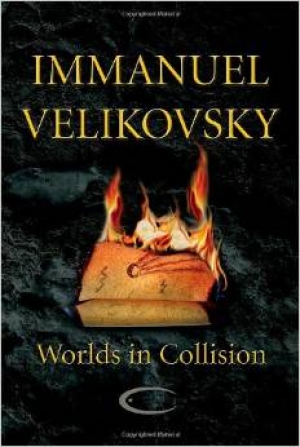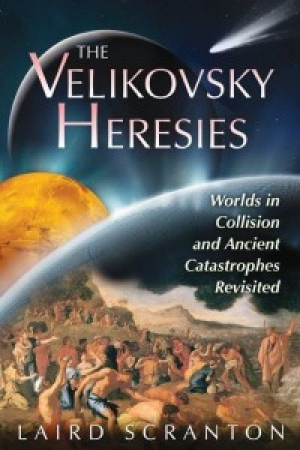Many years ago I picked up a couple of beat up copies of books by Immanuel Velikovsky at a used book store. I knew the name, but not much else. I figured maybe one day I would read them. Around 2012, I had become very interested in The Electric Universe theory and thunderbolts.info has become a favorite site of mine. They often mention Velikovsky, enough so that I finally sat down and read "Worlds in Collision".
The main gist of Velikovsky's theory is that Venus started life as a comet, and within historical times. It was ejected from Jupiter around 1600 B.C. when a larger mass collided with the gas giant, and it had close encounters with both Earth and Mars before settling into it's current location. Velikovsky was a Russian born psychoanalyst, and a friend and contemporary of Einstein. When this book was published in 1950 it ignited a huge controversy. First of all, he was writing outside of his field. Second, he was contradicting accepted science at the time. Third, he was using ancient texts to support his theory, especially the Bible. None of this sat well with the scientific establishment of the time. It got worse, when various predictions he made, Venus would be hot, not cold as mainstream science believed, for example, turned out to be correct. In fact, the majority of what Velikovsky predicted seems to have been accurate. The attacks on him are astonishing, and have been covered in many other books. Carl Sagan made a special point of trying to take down Velikovsky, and many feel that he was successful. However a clear, unbiased look at what Sagan did, reveals that he actually failed to disprove Immanuel's theory, and that it was more of a hit job than anything else. Back to the book. It is a fascinating read. It was a best seller when it came out, and has held it's own for a long time after. It is well written, and detailed. And, yes, he does take passages from the bible to support his theory. However, he finds equating passages from other parts of the world to substantiate this. If one text says the sun stood still in the sky, he looks for, and finds, other texts from the same time period, from other parts of the world, that say the same thing. He shows that Venus is not mentioned by any cultures prior to a certain point, approximately 1600 B.C. He shows that it flew erratically around the heavens, and was a fearsome thing in the sky. He shows that it had a comet's tail, and was often referred to as comet's were. It is a stunning piece of work. I was pretty blown away when I got done. This book, however, was published in 1950. What I wanted to know was, has anything in our current understanding of science and history been found that soundly defeats Velikovsky's work? It seemed like a massive undertaking.
Buy on Amazon.







